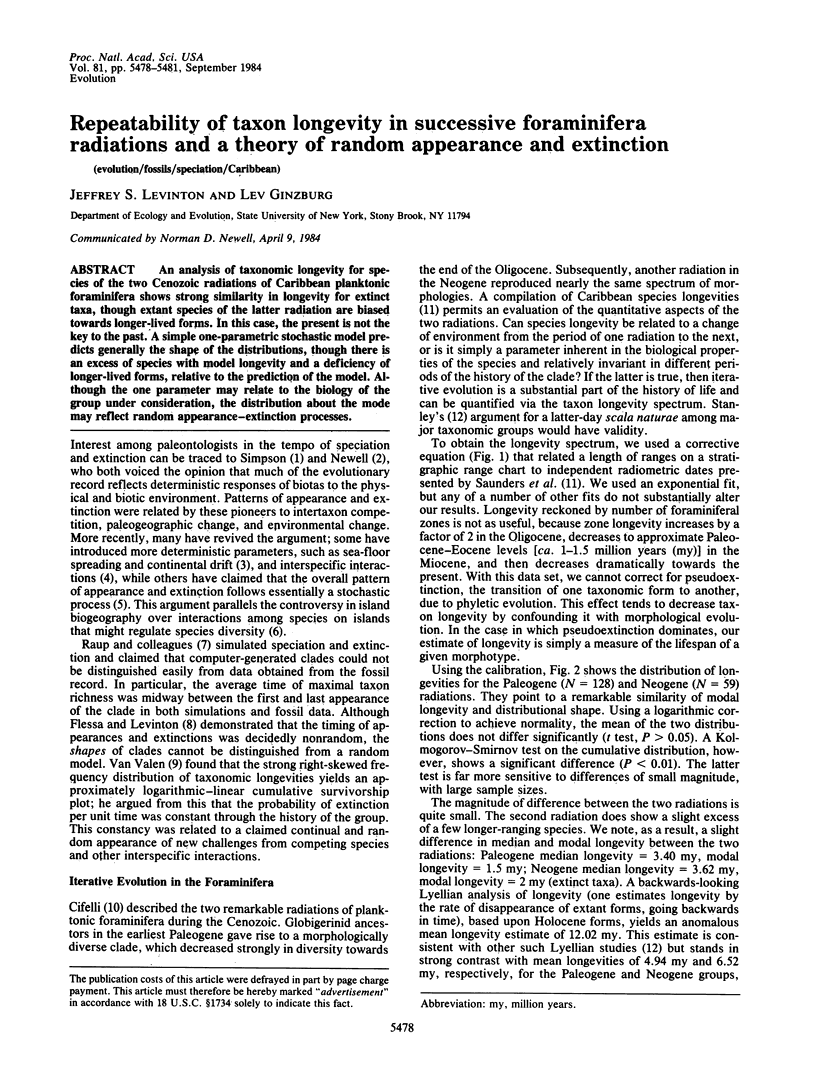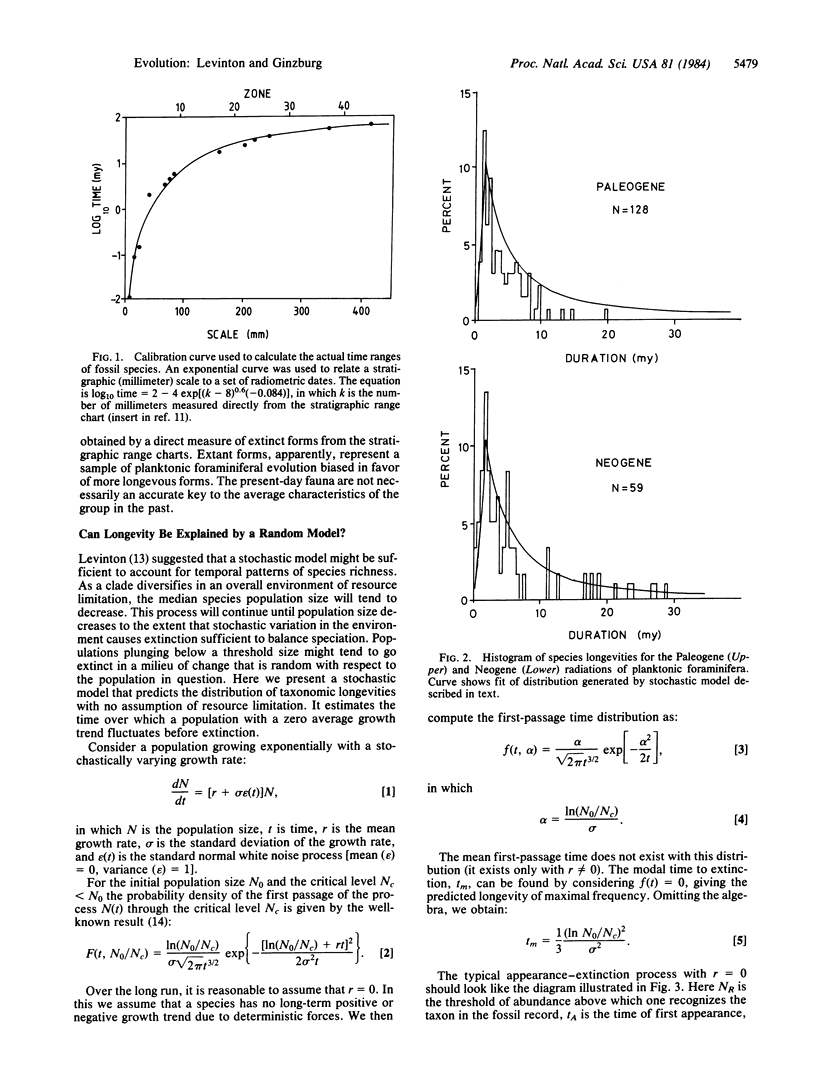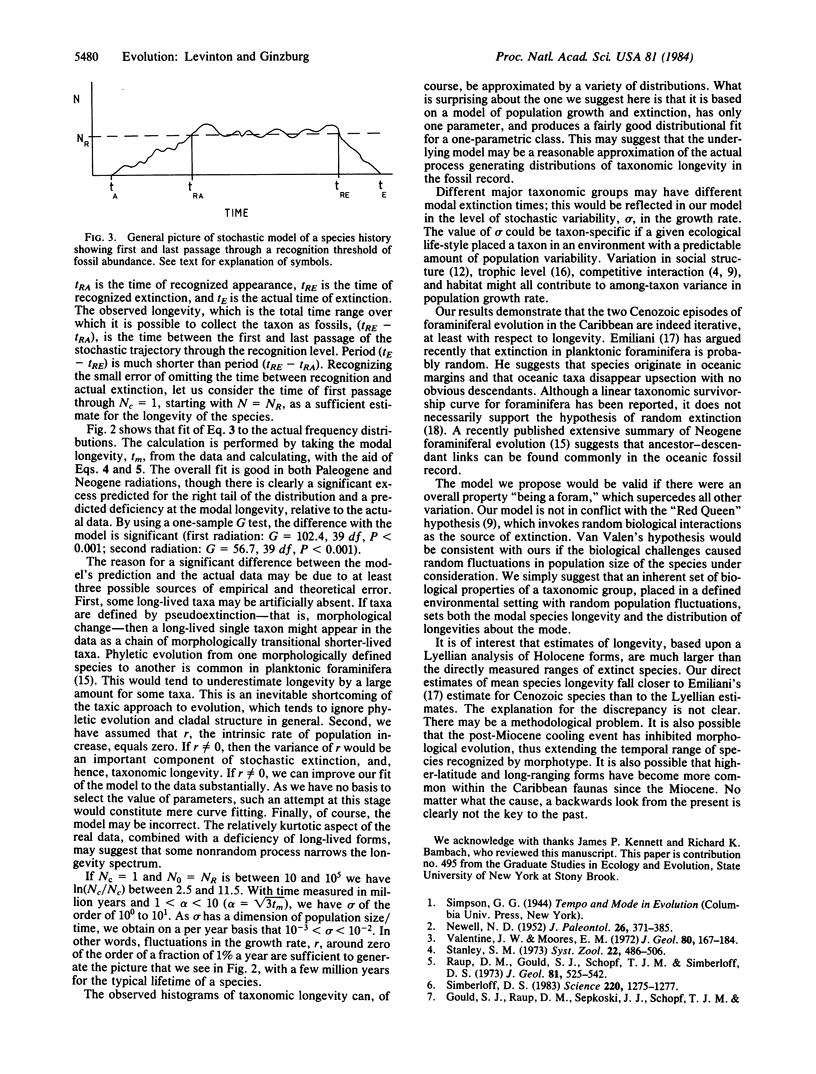Abstract
An analysis of taxonomic longevity for species of the two Cenozoic radiations of Caribbean planktonic foraminifera shows strong similarity in longevity for extinct taxa, though extant species of the latter radiation are biased towards longer-lived forms. In this case, the present is not the key to the past. A simple one-parametric stochastic model predicts generally the shape of the distributions, though there is an excess of species with model longevity and a deficiency of longer-lived forms, relative to the prediction of the model. Although the one parameter may relate to the biology of the group under consideration, the distribution about the mode may reflect random appearance-extinction processes.
Keywords: evolution, fossils, speciation, Caribbean
Full text
PDF



Selected References
These references are in PubMed. This may not be the complete list of references from this article.
- Capocelli R. M., Ricciardi L. M. A diffusion model for population growth in random environment. Theor Popul Biol. 1974 Feb;5(1):28–41. doi: 10.1016/0040-5809(74)90050-1. [DOI] [PubMed] [Google Scholar]
- Levinton J. S. A theory of diversity equilibrium and morphological evolution. Science. 1979 Apr 20;204(4390):335–336. doi: 10.1126/science.204.4390.335. [DOI] [PubMed] [Google Scholar]
- Simberloff D. When is an island community in equilibrium? Science. 1983 Jun 17;220(4603):1275–1277. doi: 10.1126/science.220.4603.1275. [DOI] [PubMed] [Google Scholar]


